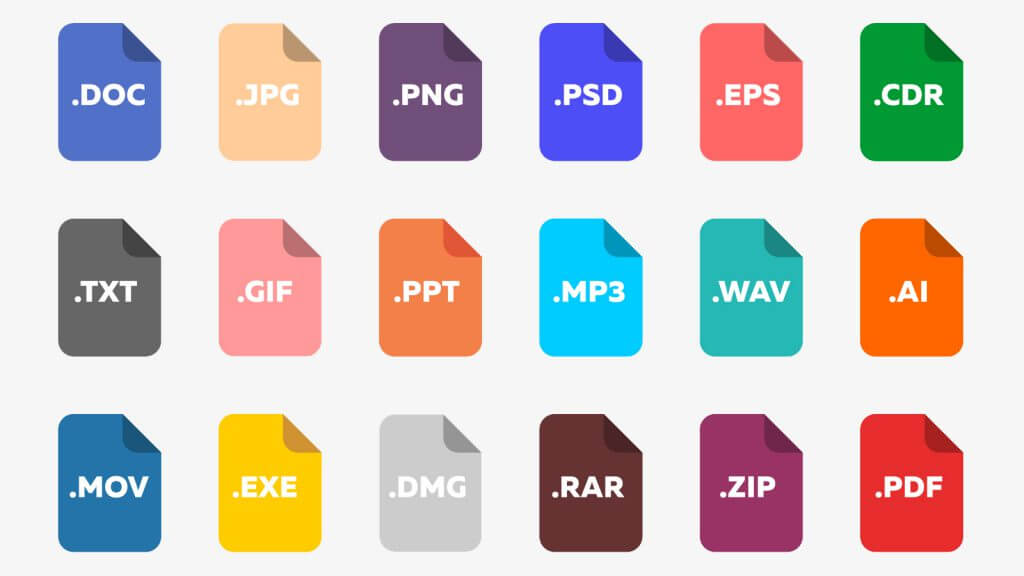Digital Asset Management
5 Ways to Scale Production of Digital Assets
The digital asset industry is set to reach $6.9 billion by 2024, which isn’t at all surprising when you consider how crucial digital assets are these days in helping you build successful marketing campaigns.
They also play an important role in various other areas of your business, such as training employees, scaling managerial workflows, and supporting your sales efforts, to name but a few.
That's why it's important to scale the production of digital assets as your business or brand grows.
Read the rest of this article to discover 5 creative ways to scale the production of digital assets.
But first, a quick definition of what digital assets are, and why they are important for your brand.
What are Digital Assets?
A digital asset is any digital material or file that offers value to an individual or enterprise. It can be described as something represented in digital form that has acquired or intrinsic value.
Ideally, these types of files are organized such that they are easy to distribute and readily accessible to all departments/teams or partners within your company.
Listed below are some of the most common file types that you might consider as digital assets for your business.
- Videos hosted on YouTube or TikTok
- Images shared on Instagram or Facebook
- Audio files including podcasts
- Presentations created on PowerPoint or Prezi
- Illustrations and animations
- Logos created using the best logo makers
- Graphics created using design software
- PDFs, eBooks, and other digital text
- Spreadsheets on Excel or Google Sheets
… and any other files modern companies need to support their marketing and sales initiatives.
These files come in a wide variety of formats, as shown by the image below:
When considering digital assets, it’s important to note that technology is constantly evolving, and as new digital formats emerge, the definition of digital assets in business will continue to change, as well.
However, keep in mind that the format of the file is simply a part of the definition.
The value of the digital asset to the individual or company makes up the other part.
So in essence, for any file to be considered a digital asset, it must satisfy the following criteria:
- The file must be a digital file owned by an individual or company
- It must provide value to its owner (for example, a personal blog that you are proud of has value to you. But, unless it actually brings in money, it can’t be considered a digital asset).
- It must be easily searchable, accessible, and distributable (this is usually achieved with metadata).
Any file you possess that satisfies the three key elements above is a digital asset.
Why are Digital Assets Important?
Digital assets are important for many reasons. They ensure consistency in your marketing efforts across all channels.
For this reason alone, these files are a valuable part of any marketing strategy. However, their value goes way beyond that.
Digital formats help you differentiate your brand from all the rest.
Whether it's through the use of images, infographics, or logos - each digital asset is a valuable piece of content that helps you further your business in some way.
This is all the more important these days because the way we do business has changed. Although emotions often influence the behavior of buyers, these days it's not just about cool and exciting ads driving customer demand.
It's more about who connects best with their customers - something that is a huge challenge in an increasingly digital world where most connections are happening across various online channels.
A powerful digital asset creation and management strategy will help you stay ahead of the competition, connect with your audience, and keep them engaged by providing you with a powerful visual representation of your products, services, brand, culture, etc.
Ultimately, this will be a key driver of online engagement, brand awareness, online engagement, customer loyalty, and any other business objectives you want to meet on any channel you choose.
Examples of Digital Assets
It's important to understand what is a digital asset and what isn't. For example, a quick screenshot of a pair of Nike sneakers sent to a potential client in a one-off email is not a digital asset.
However, a high-quality photoshoot image of the same shoes is a digital asset for the company with high long-term value.
Before we look at the 5 ways to scale the production of digital assets, here are a few examples of digital assets that go beyond mere text and images:
- Software: Code and deployed services are types of software that can be considered digital assets.
- Knowledge: When recorded in formats such as eBooks, websites, documents, and media, knowledge can be considered a digital asset.
- Data: Information in unstructured formats and databases counts as digital assets.
- Patents and Trade Secrets: Digital assets can also be any details of inventions documented in digital format.
- Designs: Architectural plans, visual designs, etc. also count as digital assets.
The list doesn't end there. You can also consider things such as art, music, entertainment and media (e.g. movies, news, educational content), even virtual property and digital currency - all of these can be considered as digital assets.
5 Ways to Scale Production of Digital Assets
And now, here are 5 genius ways to scale your digital asset production.
1. Outsource Digital Asset Creation
The term “digital asset” is becoming more and more common, and there’s an increased use of digital assets in marketing and creative communication. In fact, digital assets are so popular now that companies spend hundreds of millions of dollars on digital content each year.
However, many marketers face a challenge when it comes to creating high-quality, original content on a consistent basis.
For this reason, outsourcing is a great option to consider if you want to scale your digital asset production.
You can outsource all types of digital asset creation work, including:
- Blog writing
- Graphic design
- Video creation
- Purchasing PLR courses
…and more.
And remember, all types of creative workflow are riddled with inherent roadblocks that limit your efficiency. These problems can arise from different factors that ultimately boil down to the poor system for standardizing and automating processes.
By outsourcing digital content creation you can bypass all these issues and keep up with your content demands without any hassle.
You can use a DAM platform to help you define a workflow and integrate your production tools, simplify collaboration, and automate tasks for your content creators.
HubSpot is an example of a brand that scales the production of digital assets successfully by outsourcing content creation.
The platform even created a guide to help other businesses scale up their content production effectively.

2. Automate the Process of Sharing Digital Assets
Automating the sharing of digital assets is yet another way for you to scale production. Oftentimes production comes to a halt when marketing teams have to deal with the process of sharing digital assets in partnership with niche influencers or on various channels, such as the brand’s blog, email, social media, and other channels.
But, with a reliable strategy for sharing your content, there’s no need to experience such a situation and you can scale your content creation with no bottlenecks in the process.
Besides, many of the tasks involved in sharing and promoting your digital content are repetitive tasks that waste a lot of your creatives’ precious bandwidth, and that’s all the more reason to have a system in place that takes care of all of this and more automatically. One way to achieve that is to make use of productivity tools that allow to automate and monitor the process, making it more time and cost-effective.
Choose Smart Distribution
When using a DAM, you’ll be able to share curated folders of digital assets with the right audience at the right time.
You’ll simplify asset sharing while maintaining access control at all times. No more worrying about sorting finished assets manually - this tool will let you share finished projects instantly so everyone is on the same page, including different departments, other marketing teams, vendors, agencies, retailers, etc.
3. Create Evergreen Digital Assets
Time-sensitive digital assets have their value, but you can't go wrong with creating evergreen content for your business as a major part of your marketing strategy. That's because this type of content will remain valuable long after it is released.
It encourages higher and more stable search engine rankings, generating organic traffic over time.
In fact, the longer the piece is published, the more website traction it pulls, and the higher its ROI.
So, when scaling the production of your digital assets, consider the timeless benefits of evergreen content, particularly if you want to increase your SEO traffic over time, get more links, and generate a continual flow of leads.
Some of the most effective types of evergreen digital assets include:
- List Posts (e.g. 15 of the World's Most Romantic Destinations)
- How-to Tutorials (e.g. How to Build an eCommerce Website)
- Encyclopedic Entries (e.g. Everything your Need to Know About …)
- Top Tips (e.g. Top Tips for Scaling Digital Asset Production)
When creating evergreen content, make sure it not only benefits your target audience but also that it stays relevant so they can find value in it for a longer period.
You also need to revisit each evergreen digital asset from time to time in order to keep it up-to-date and make sure all the related content, links, etc. are still relevant.
4. Cross-Share Digital Assets on Various Platforms
Cross-sharing digital assets on various digital marketing platforms is yet another effective scaling method that you can use to grow your business.
So, for example, if you create a post for your blog, you can then post the same content to your LinkedIn newsletter, social media channels, email, or anywhere else where you connect with your target audience. For this, make sure to use a professional website builder so that your website is engaging, send proper emails, and keep your social media neat.
However, instead of crossposting the exact same content, you'll want to tweak the content to better align with the platform you're posting it to.
For example, a long-form blog post won’t perform well on Facebook, but it might work better on LinkedIn. In the same way, longer videos won't do well on Twitter but will be highly effective on YouTube.
Once you understand the audience and the platform content requirements of each channel, it will enhance your cross-posting strategy to give you even better results from your efforts.
5. Recycle Old Digital Assets
Reusing and repurposing existing content is one of the easiest ways for scaling the production of digital assets.
It allows you to get more out of the content that's already out there, which means you don't have to start from scratch with the research, outlines, etc., particularly when dealing with long-form formats, such as webinars, eBooks, etc.
So, for example:
- A chapter from an eBook might be transformed into a blog post.
- A popular blog post might be turned into a video or broken down into engaging snippets for social media.
- Turn a podcast episode into a blog post.
- Transform images into an engaging slideshow.
… the options are endless and you are only limited by your creativity.
Best Practices for Digital Asset Production
Successful digital asset protection and management rely on a few highly effective best practices to provide the best system.
Here are a few tips to keep in mind when scaling the production of digital assets for your business.
1. Evaluate the Value of Digital Assets
The first step in creating a solid strategy to scale your digital assets is to conduct a content audit to evaluate the value of digital assets.
The last thing you want is to spend time and money producing assets that aren't worth much for your company.
To understand the value of each digital asset, consider more than its hard cost. You also need to look at the time and effort spent producing it, how difficult it is to reproduce, and other factors to help you get a better idea of its value. And remember, you’re always better off creating high-value digital assets for your business.
2. Make Your Digital Assets More Discoverable
This post is mainly focused on the creation of digital assets. However, it’s also important to remember that these assets are only valuable if they can be discovered and used.
This report shows that over half the marketers surveyed wasted money producing digital assets that went unused.

That’s why it’s crucial to ensure that you have a way to make your digital assets more discoverable by everyone in your organization or team.
One of the best ways to make your assets more discoverable is by using metadata like title and meta description tags and smart taxonomy or category structure.
You can think of metadata as data about data. It provides a variety of information about each of your assets to make them more discoverable.
So, for example, where images are concerned, it can tell you:
- Technical Metadata: This includes things such as image resolution, dimensions, size, photographer’s name, etc.
- Descriptive Metadata: This includes titles, description, keywords, and other descriptions that make a resource more discoverable.
Taxonomy is a hierarchical structure that helps you categorize and classify digital assets to make navigation easier.
It’s a great way to identify relationships between different assets and helps users intuitively browse for what they need in a digital asset management system (even when they’re not quite sure what that is).
3. Create a Digital Asset Management Strategy
As previously mentioned, many consumer brands come across bottlenecks when handling digital content. One way to get past this challenge is to create a strategy for handling digital assets in your business.
This way, you reduce the risk of some assets going unused because people can't find them.
In fact, this report shows that implementing a system for managing and distributing digital assets can save the company over $150,000 per year in inefficiencies.
So make sure your business creates a plan that allows you to better store, organize, and access all your digital assets. You'll not only be able to save a lot of money, but you'll also make it easier for everyone in your team to distribute materials that are consistent with your brand and messaging.
The image below shows the digital asset lifecycle, which makes it clear why leveraging your company’s assets in a more effective way will help your business grow and provide you with a competitive edge by using metadata and brand consistency.

4. Use the Right Tools
Throughout the tips outlined above, you may have noticed a common thread. You must invest time upfront in order to get organized and have systems in place to successfully scale digital content production.
There are tons of digital asset management solutions to choose from, but not all of them are created equal.
You want to choose a tool that has all the features you need to allow you and your team to do everything you need to out-of-the-box and adapt to your needs.
You want a platform that will become a single source of truth for your entire organization, as well as external partners, allowing you to remove bottlenecks, reduce friction, and streamline all your processes for creating and managing content at scale.
Conclusion
Growth in any organization comes with plenty of challenges. That's why you need a vision for scalability that will allow you to tackle these challenges as they come.
One of the best things you can do to scale your production of digital assets is to have a plan in place (and the right tools) to ensure that all your efforts bring in a healthy ROI.
With the right content creation and management tools, you'll be able to equip your business well by automating processes to eliminate waste, streamline your workflows for brand consistency, and maximize your ROI.

Ron Stefanski
You can also connect with him on YouTube or Linkedin.
Share this Post

